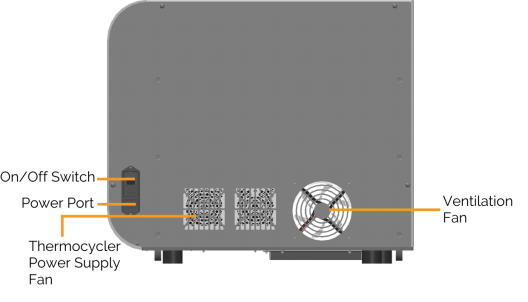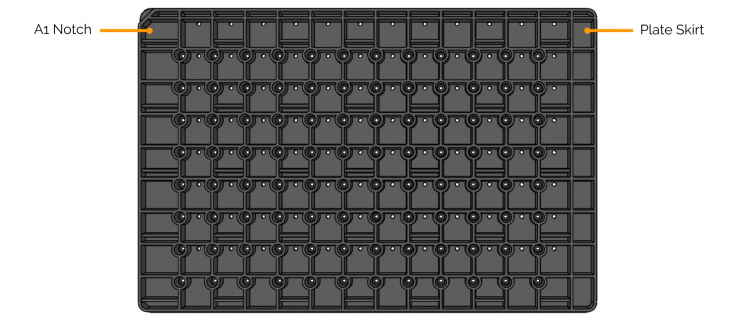
Before you set up the CONSTELLATION hardware, you'll need to understand the names of its components and where each component is located on the system.

CONSTELLATION Front

CONSTELLATION Back
The CONSTELLATION has two plate trays located in the front of the instrument. Each plate tray consists of four plate slots where you place microplates that you want to image. To open the plate tray, tap the EJECT TRAY button on the Task screen. See also Plate Overview for more information.
The tablet screen is where you can interact with the CONSTELLATION system. Here you can control the instrument, create experiments for each plate slot, choose your imaging settings, view your results, and so on.
The tablet holder has an adjustable stand, allowing you to adjust the tablet position for more convenient viewing when running the CONSTELLATION software.
The panel facility consists of the tablet power cord, tablet USB, and USB port that connect the tablet to the instrument.
The on/off switch turns all external power to the instrument on or off.
The power port is where you can connect the power cable to the CONSTELLATION. The other end of the power cable should be connected to an electrical outlet.
The two thermocycler power supply fans ensure that the internal thermocycler power supply doesn't overheat.
The ventilation fan ensures that the CONSTELLATION hardware doesn't overheat.

Top View

Left View

Top and Side Views of a Single CONSTELLATION Plate Well
The A1 notch indicates the position of the A1 well. When placing the plate on the plate slot, position the A1 well in the top right corner of the plate slot.
Each CONSTELLATION dPCR plate has a unique barcode number affixed to the plate. After you place the plate on the plate slot, the CONSTELLATION instrument will scan the barcode and the software will display the plate information on the corresponding plate slot.
The plate skirt provides a consistent footprint for the microplate. The skirt also keeps the partition surface elevated above the work bench to prevent damage to the samples.
The input well is where the master mix, primers, and sample are added to the microplate.
This is where the reagent is partitioned and amplified.
The connecting channels add rigidity to the microplates.
The vent is used during priming. It allows any leftover PCR reaction mixture to exit the partition chambers when they are full.

|
|
| COC-V20R018 |